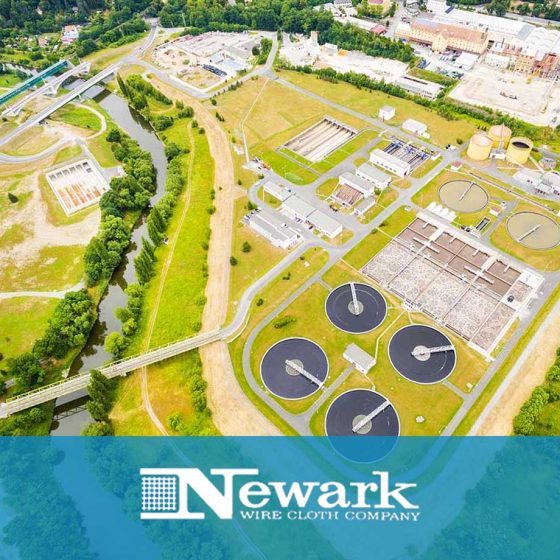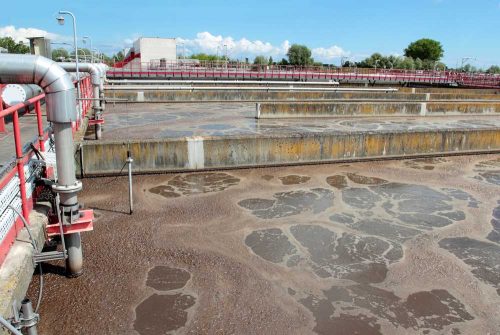Newark Wire News
Newark Wire News
Filtering the filth: Wastewater Treatment and Wire Cloth

Wastewater processing in the United States is often taken for granted. In fact, according to the Environmental Protection Agency more than 34 billion gallons of wastewater are processed by treatment plants every day. However, many communities across the country will experience impure drinking water either from bad pipes or wastewater contamination due to overflowing sewers. Wastewater processing is critical for public health, and filtration through wire cloth and mesh is a key processing component.
A down and dirty overview
The primary goal of wastewater treatment is to eliminate as much of the suspended solids as possible before the remaining water is discharged back into the environment. When solid material decays, it consumes the oxygen needed by plants and animals living in the water. Too much of this causes oxygen depletion which ultimately destroys the impacted habitat.
In general, there are four steps to wastewater treatment which fall under two basic treatment stages: primary and secondary.
- Screening/preliminary treatment – Large items like diapers, bottles or rags are filtered out as incoming wastewater encounters a first set of screens while sand and gravel settle into a grit chamber
- Primary treatment – Organic solid matter (sludge) is separated from wastewater in settlement tanks
- Secondary treatment – Wastewater is pumped full of oxygen to facilitate breakdown of any remaining sludge in aeration tanks
- Final treatment – Wastewater passes through settlement tanks again, then through a bed of sand or other media to remove additional particles
Filtered water, often treated with chlorine to kill pathogens, is discharged into a river or other body of water. The remaining sludge is treated to create a nutrient-rich biosolid which is then used as fertilizer.

An extensive screening process
Wire screens and cloth of varying mesh sizes are used throughout wastewater processing. The largest of these starts spaced anywhere from one to three inches apart to catch large pieces of trash and other debris. As the incoming water progresses through the treatment process, the screens and cloth move from coarse to fine.
Generally, screens are placed in a chamber or channel and angled towards the flow of the wastewater. By angling the screen, debris is caught on the upstream surface, enabling quick access for manual or mechanical cleaning.
In some processing plants, finer screens are placed after the grit chamber (where sand and rocks settle out) to remove any additional material that might potentially damage equipment or cause issues further down the line. The grit and screenings removed by these processes are then collected and taken to a landfill for disposal or are incinerated.
After the screening is completed and the grit removed, there are still dissolved organic and inorganic materials along with suspended solids in the wastewater. These consist of minute particles that can be eliminated from the wastewater with additional treatment such as sedimentation (gravity settling), chemical coagulation or filtration.
Pollutants that are dissolved or are very fine and remain suspended in the wastewater are not effectively removed by gravity settling. This is where wire cloth is especially useful since the highest mesh count can remove particles only 20 microns in size.
Wastewater in, clean water out
While there is significantly more to wastewater treatment than what is presented here, these are some key takeaways to remember.
- Wastewater processing is absolutely imperative for preserving public health
- Wastewater processing moves from coarser to finer filtering
- Wire mesh and cloth are important filtering media in wastewater processing plants
Newark Wire Cloth, a recognized leader in the wire cloth industry, manufactures off-the-shelf and custom woven wire cloth for any and every application – including wastewater treatment. It has specialized in the fabrication of wire cloth parts and assemblies for the past 105 years. Contact them today to discuss how wire cloth can help improve the quality and efficiency of your wastewater processing facility.
